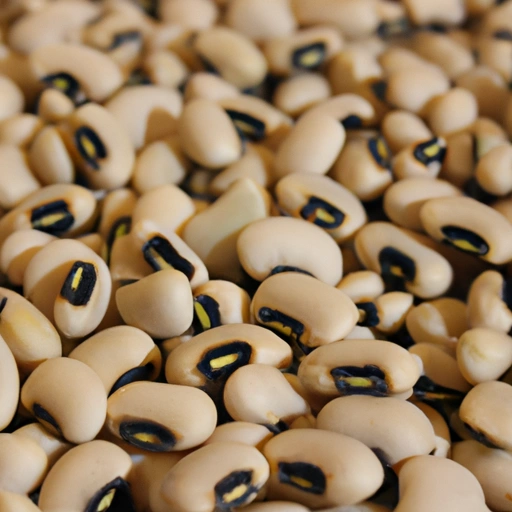Black-Eyed Pea
Description

The black-eyed pea, also known as black-eyed bean or cowpea, is a subspecies of the cowpea, grown around the world for its medium-sized, edible bean. The bean is named for its prominent black spot on its cream-colored skin and is a staple in both American Southern cooking and a variety of global cuisines.
Common uses
Black-eyed peas are commonly used in salads, soups, stews, and as a stand-alone side dish. They are celebrated for their ability to absorb flavors from other ingredients and spices, making them incredibly versatile in the kitchen.
Nutritional value
Calories
One cup (about 170g) of cooked black-eyed peas contains approximately 160 calories.
Protein
Black-eyed peas provide a substantial amount of protein, with about 13 grams per cup (170g).
Fat
These legumes are low in fat, containing less than 1 gram per cup (170g).
Carbohydrates
Carbohydrates are present at about 35 grams per cup (170g), making them a good source of energy.
Vitamins
They are a good source of B vitamins, particularly folate, with around 210 micrograms per cup (170g).
Minerals
Black-eyed peas are rich in minerals such as iron, potassium, magnesium, and calcium.
Health benefits
Regular consumption of black-eyed peas can contribute to heart health due to their high fiber content, which helps lower cholesterol levels. They also support digestive health and can aid in weight management as part of a balanced diet.
Potential risks
As with other legumes, black-eyed peas contain antinutrients that can affect the absorption of minerals and may cause gastric distress in some individuals if not prepared correctly.
Common recipes
Popular recipes featuring black-eyed peas include Hoppin' John, a traditional Southern dish, as well as African and Caribbean stews and curries.
Cooking methods
They can be boiled, stewed, or fried, and are often soaked prior to cooking to reduce cooking time and improve digestibility.
Pairing with other ingredients
Black-eyed peas pair well with rice, greens, pork, and a variety of spices such as cumin, coriander, and chili.
Summary
Black-eyed peas are a nutrient-dense and flavorful ingredient that have a place in a wide array of dishes from different cultural backgrounds. Whether you're looking to add protein to a vegetarian dish or simply want to try something new, black-eyed peas are a versatile choice that can be adapted to fit any recipe. Their unique flavor and health benefits make them a valuable addition to any kitchen around the world.